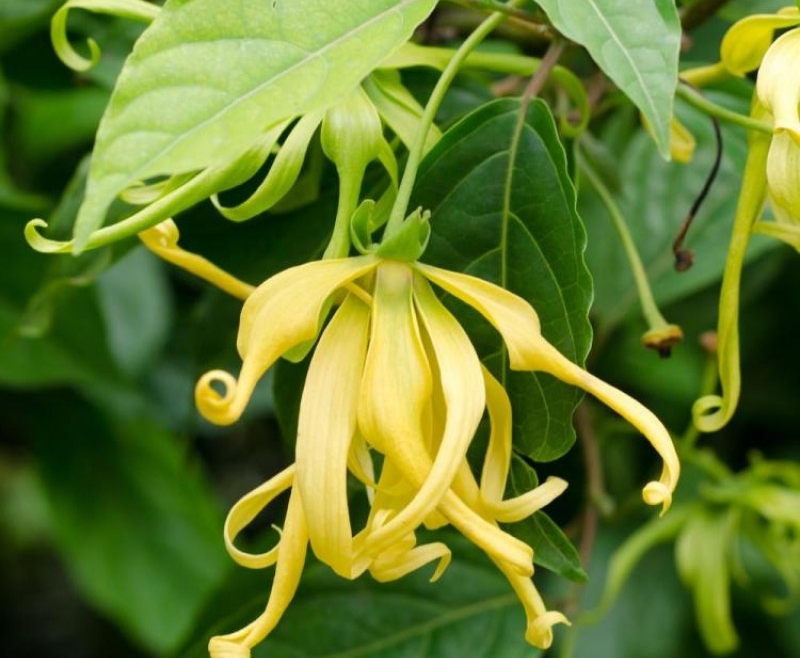The Ylang ylang tree, scientifically known as Cananga odorata, is a tropical tree native to Southeast Asia, particularly in countries like Indonesia, Malaysia, and the Philippines. Here are some key features and facts about the Ylang ylang tree:
1. Appearance: The Ylang ylang tree is an evergreen tree that can reach a height of 20 to 40 feet (6 to 12 meters). It has large, glossy, and elongated leaves with a rich green color.
2. Flowers: One of the most distinctive features of the Ylang ylang tree is its highly fragrant flowers. The flowers are star-shaped and have six narrow, twisted petals. They are typically pale yellow to yellow-green in color.
3. Fragrance: The flowers of the Ylang ylang tree have a sweet, exotic, and intensely floral fragrance. The scent is often described as delicate, sensual, and reminiscent of jasmine, with hints of other floral notes. Due to its captivating aroma, Ylang ylang is commonly used in perfumery and the production of essential oils.
4. Essential oil production: The flowers of the Ylang ylang tree are steam-distilled to extract the precious Ylang ylang essential oil. The oil has a wide range of applications in perfumes, aromatherapy, and skincare products. Different grades of the oil, classified as “extra,” “first,” “second,” and “third,” are obtained at different stages of the distillation process, each having a slightly different aroma profile.
5. Medicinal and therapeutic uses: Ylang ylang essential oil is believed to have various therapeutic properties. It is often used in aromatherapy to promote relaxation, reduce stress, and improve mood. It is also used in traditional medicine for its potential anti-inflammatory, antiseptic, and aphrodisiac effects.
6. Other uses: Apart from its fragrance and medicinal uses, the Ylang ylang tree is sometimes cultivated for its timber, which is used in construction and for making furniture and crafts. The tree also provides shade and is sometimes planted as an ornamental tree in gardens and parks.
7. Growing conditions: The Ylang ylang tree thrives in tropical climates and prefers well-drained soil and full sun. It requires a warm and humid environment to grow and is often found in coastal regions.
8. Cultural significance: The Ylang ylang tree has cultural significance in Southeast Asia. In Indonesia, the flowers are commonly used in traditional ceremonies and rituals. They are also sometimes scattered on the beds of newlyweds as a symbol of love and romance.
The Ylang ylang tree is not only admired for its captivating fragrance but also valued for its beauty and the wide range of benefits associated with its essential oil.


